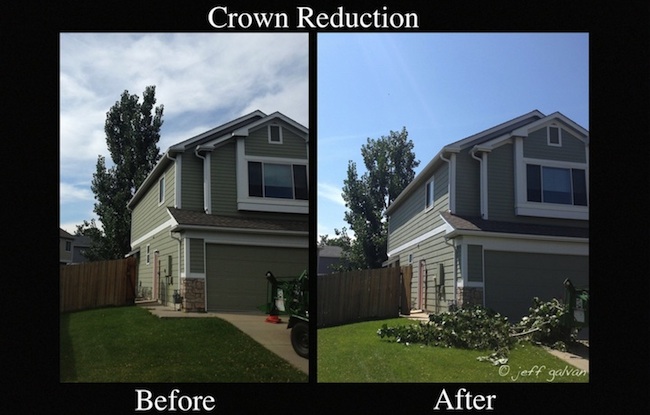
Crown Reduction is a method used when we want to properly reduce the overall size of the tree.

Reducing the crown on large trees and wildly overgrown trees takes time to do correctly.
We literally go out to the tips of each limb and make smaller reduction cuts in beneficial locations. Trees recover more rapidly when smaller cuts are made and the growth hormones that are more concentrated at the ends of the branches are now flowing to the “new” ends.
Over time, this creates a shorter, thicker and stronger branch. When the entire tree is pruned with this technique, the crown or canopy of the tree is reduced in height and width and the diameter of the trunk, branches and twigs increases.
It is much quicker, easier and often less attractive for someone to reduce the size of a tree by making a few large heading cuts or topping the tree. This often creates a weaker tree (the integrity of the new branches will be compromised because the point of attachment of the new shoots are not very secure) that will need corrective pruning or a crown restoration in the future. Incorrectly reducing the crown this way may increase the overall cost of tree care in the years to come, increases the chances of weakening the tree, and, in some cases can seriously damage or even kill a tree.